Opinion & Analysis
Analyzing the logos of the six most recognizable golf brands
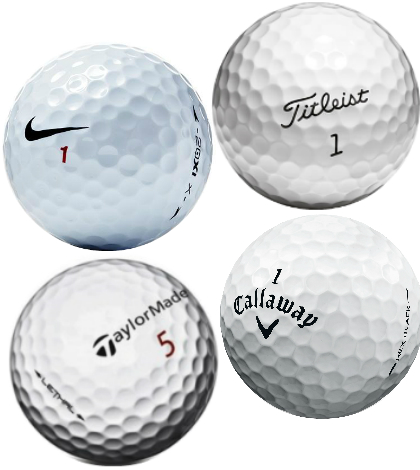
If a picture can be worth a thousand words, a logo can be worth a fair bit more. Like millions. Or billions.
The total golf economy of 2011 was responsible for nearly $70 billion in spending. As such, every OEM wants a share of this monetary pie and the way the consumer perceives an OEM has as much to do where the dollars are spent as anything.
With that in mind, let’s take a look at the stories behind and the images of a select few of the most recognized golf brands in the world.
Titleist
It would be a mistake to refer to the iconic logo as a font. Simply, it is a custom script and can’t be found as an option in any Word document. Thus, the mantra of “often imitated but never duplicated” might apply.
As a logo, the script is simple, clean and classic. There is a timeless element, which is no doubt a function of the fact that the logo hasn’t changed since its inception. The name Titleist is derived from moniker title holder or one who owns the title — the champion. Titleist has been a ball-first company since Phillip W. Skipper Young, an MIT grad, took X-rays of his ball and found the internal elements to be a bit off center. The result is the most dominant ball company in the world. It also makes a pretty decent line of woods, irons, hybrids and putters. You know what they say about something that ain’t broke.
My take: For many, Titleist IS golf. Like the logo, the resulting product is clean and classic. The target consumer for Titleist is one who isn’t necessarily looking for the loudest or boldest product, but a product that is going to perform and won’t ever run the risk of being labeled “gimmick” or flashy. The primary risk in this model is losing a consumer who is attracted to something a bit more caffeinated, but those who are always looking for the “next best thing” probably aren’t attracted to Titleist in the first place.
However, with such a large lead in the ball portion of the industry (nearly 50 percent marketshare), minor refinements and adjustments to the rest of the line are all the company needs at this point. The profits from this area allows the company to hold true to the manner in which it would like to develop and market the club portion of the company. The loyalty (and thus revenue stream) has been firmly established with the ball, and while other OEMs try to put a dent in Titleist’s market share, it’s like trying to drink the Atlantic through one of those twisty straws.
TaylorMade
The name conjures up images of a fine suit made to the exact specifications of the awaiting customer. However, this iteration is the largest golf OEM today, buoyed by a dominance in the metalwoods portion of the industry to the tune of nearly 35 percent. This company has profit like the desert has sand.
In 1983, TaylorMade introduced the first Burner series driver and the logo used was a red circle with a martini glass shaped “T” in the middle. Four years later, TaylorMade added irons to the product offerings and changed to a script logo. The current logo, a white “T” against a black background is cut in the shape of a driver. The simple contrast breeds an even simpler message. It’s all about the driver. Yes, yes it is.
In 2003, TaylorMade introduced the now-legendary R510 TP driver and accompanying TP crest to denote clubs more suited to the low-handicap player. TaylorMade went away from this visual designation after the R9 TP irons, although it has continued to offer a TP line of premium shafts. There are rumors, however, that the TP crest might make a revival moving forward and with it opportunities for the public consumer to play more of the equipment TaylorMade’s Staff Players actually use. Either way, the move will be calculated and likely quite profitable. If this does happen, expect TaylorMade to go full throttle and expect the public to show up with open wallets.
My take: TaylorMade knows exactly what it is doing and it is laughing all the way to the bank, because no one plays on the emotional vulnerability of the consumer golfer better than TaylorMade. The vast majority of humanity is never going break par, hit a smooth 7 iron 185 yards or putt like Tiger. But, it’s quite likely we will bomb a drive or two, hit the occasional sprinkler head and end up 300 yards down the fairway. Distance is intoxicating and TaylorMade is dedicated to reminding us of this time after time and dollar after dollar.
In an industry where the last decade has seen very few true “game-changing” innovations, TaylorMade continues to out-market and out-sell pretty much everyone else. What you think is true is far more important to TaylorMade than what is actually happening. It’s comfortable with its identity and its ability to market and shape the behavior of the willing consumer is unparalleled in the industry. When you’re on top, you’re going to take an inordinate amount of criticism. The upside is, well, everyone is still looking up at you.
Callaway
In 1988, Callaway Hickory Stick USA became Callaway Golf Company and the “Old English Callaway logo” introduced golfers to the Callaway golf brand and core S2H2 technology. The script is reminiscent of all things old, English, St. Andrews, sheep, pastures and the feathery. In 2002, the company added the chevron as an accent marker and has used this modified logo since. The chevron itself dates back to the Middle Ages, and as a French term generally refers to supporting beams (rafters) of a structure. The symbolic element is one of protection and part of the reason this image is often used on military uniforms.
My take: Appealing to the history of the game is an effective and cheap way to purchase authenticity. People like playing golf clubs made by real golf companies and what’s more real than a golf company with a logo that looks like it’s been around since Old Tom Morris was yelling at Young Tom Morris to get his chores done?
In the 1990s, Callaway struggled to create a mass presence as the logo, image and associated players (Johnny Miller, Jim Colbert) didn’t exactly enthuse the general consumer. Annika Sorenstam was undoubtedly a huge draw for females, but that in and of itself didn’t create mass revenue. The addition of Arnold Palmer to the Callaway staff in 2000 certainly increased credibility, but didn’t score many “youth” points. That said, during the last decade, Callaway has made a concerted effort to maintain top-shelf staff (Ernie Els, Phil Mickelson, Jim Furyk) while attracting new/younger talent (James Hahn, Morgan Pressel, Luke List, Patrick Reed). In the last 15 years, Callaway seems to have positioned itself quite nicely, and given its recent legal tiffs with TaylorMade, Callaway is poised to fight for every inch…or yard as the case may be.
Adams
From 1991 until the summer of 2013, Barney Adams and Adams Golf leveraged the momentum created by the original Tight Lies fairway woods into a full-fledged golf equipment company. The logo during this time was fairly non-descript and featured a red triangle followed by the name of the company. The logo itself was quite underwhelming and didn’t really promote anything in particular relative to the company.
However, in 2012, Adams was acquired by TaylorMade and then just a couple months ago the logo changed as well. This time to a script-type font, somewhat similar to that of Titleist.
My take: I’m not exactly sure what Adams is trying to achieve with the new logo, but as an image, I like it. There is certainly more personality to the logo and with it and more emotion than the mechanical triangle and text which it replaced. Given TaylorMade’s recent acquisition and the ensuing questions as to what would happen with Adams, I find the move curious.
Generally, a new logo is accompanied by an effort to rebrand or at least modify how the brand is perceived. So, the question is, “What is Adams going for?” If Adams is going to remain an entity unto itself, how will this logo help it achieve this identity? Some might see the new script as classy and simple; a nice ying to TaylorMade’s edgy yang. Others might see it as a cheap version of the Titleist script and still others might think it looks more like a baseball team than golf company.
Right now there are just too many variables to know exactly where Adams is headed, but wherever they are going, the new logo is clearly part of the plan.
Nike Golf
Nike might not have the storied golf history of a Ping, Titleist or Wilson. But it does have one of the most recognized and studied logos in the history of western civilization. The company was started by Bill Bowerman and Phil Knight in the 1960s, but Nike didn’t enter the golf arena until 1998. Interestingly enough, Nike had already committed $40 million to Tiger Woods in 1995, although it had no balls or clubs of its own. That soon would change.
The story of the swoosh, Nike’s iconic logo, is a bit more interesting. In 1975, Carolyn Davidson (then a student at Portland State) was paid $2 per hour to design a logo for Nike. Seventeen and a half hours and $35 later, the swoosh was born. Originally, Phil Knight wasn’t totally sold on the logo, but thought it might grow on him. Good call!
Eventually, Carolyn was given 500 shares of Nike stock for her efforts. So I guess you can look at it one of two ways: $30,000 is a lot of cash for less than 20 hours of work, or Phil Knight got the best deal since the U.S. Government purchased the Louisiana Territory.
My take: Nike’s success prior to entering the golf market is both a bastion and hinderance. The vast amounts of capital Nike accrues allowed it to sign the most marketable figures in golf: Tiger in 1995 and Rory just last year. It also allows Nike to sign golfers to a complete deal: bag, clubs, balls, hat, glove, clubs, etc. If a player is Nike, he or she is all Nike. This is great for the players and club pros who rep the company.
The challenge is winning over the general consumer and the hurdle for some is to see Nike as a legitimate golf company. Given the level and quality of product available from other OEMs, why would someone choose to play Nike over company __________? That’s the question.
Ping
Onomatopoeia. Kind of what you’d expect from an OEM rooted in engineering. It is what it says it is. Furthermore, what’s more simple than the sound of John Solheim’s quest to create a better putter? Ping. That’s it. The moment of impact. Pure and simple. A bit metallic and it resonates.
Ping’s personification as “PING Man” seems to be equal parts man, Gumby and penguin. Whatever it is, John Solheim created it by bending wires and ultimately liked what he came up with. The unique design is reminiscent of a time when logos were not computer generated and the result of thousands of dollars of market analysis and advertising firms. Nothing is contrived and every design feature is purposeful. Both the PING script and PING Man are unmistakable and like their products, I don’t see Ping changing either unless there is a bona fide reason to do so.
My take: Ping is as authentic an OEM as we have in the major marketplace today. Profit is still the final analysis for any enterprise, but there are a variety of ways to get there. Ping gets there by staying true to its time-tested model. Engineer the living daylights out of a product and make sure it works. When it does, people will buy it. What you see is what you get. Form follows function for Ping, and the results are hard to deny.
From the Anser putter and perimeter-weighted irons to custom-fit everything, Ping has authored several of the most lasting and copied designs of the last several decades. That said, the cost for function-first designs is often lackluster aesthetics and critics of Ping are quick to note that until recently, many irons (see Eye 2) weren’t going to win any beauty contests. For my money, the the S55, Ping Gorge wedges and Anser Forged irons are a far cry from the Ping shovels of the 1990s.
It seems like everyone has a kid on the honor roll and the bumper sticker to prove it. Our culture, for better or worse, exhibits a heavy reliance on exposure and given the varied social media, 24/7 news coverage and 756 TV channels, we know the flavors of OEMs like Baskin Robbins.
Marquee players become synonymous with an OEM. Tiger = Nike, Hunter and Bubba: = Ping. Phil: = Callaway and the list goes on. At the end of the day, consumers purchases more than the product itself. They purchase a piece of the identity of the OEM. Why else do Titleist hats sell so well?
Opinion & Analysis
The 2 primary challenges golf equipment companies face

As the editor-in-chief of this website and an observer of the GolfWRX forums and other online golf equipment discourse for over a decade, I’m pretty well attuned to the grunts and grumbles of a significant portion of the golf equipment purchasing spectrum. And before you accuse me of lording above all in some digital ivory tower, I’d like to offer that I worked at golf courses (public and private) for years prior to picking up my pen, so I’m well-versed in the non-degenerate golf equipment consumers out there. I touched (green)grass (retail)!
Complaints about the ills of and related to the OEMs usually follow some version of: Product cycles are too short for real innovation, tour equipment isn’t the same as retail (which is largely not true, by the way), too much is invested in marketing and not enough in R&D, top staffer X hasn’t even put the new driver in play, so it’s obviously not superior to the previous generation, prices are too high, and on and on.
Without digging into the merits of any of these claims, which I believe are mostly red herrings, I’d like to bring into view of our rangefinder what I believe to be the two primary difficulties golf equipment companies face.
One: As Terry Koehler, back when he was the CEO of Ben Hogan, told me at the time of the Ft Worth irons launch, if you can’t regularly hit the golf ball in a coin-sized area in the middle of the face, there’s not a ton that iron technology can do for you. Now, this is less true now with respect to irons than when he said it, and is less and less true by degrees as the clubs get larger (utilities, fairways, hybrids, drivers), but there remains a great deal of golf equipment truth in that statement. Think about it — which is to say, in TL;DR fashion, get lessons from a qualified instructor who will teach you about the fundamentals of repeatable impact and how the golf swing works, not just offer band-aid fixes. If you can’t repeatably deliver the golf club to the golf ball in something resembling the manner it was designed for, how can you expect to be getting the most out of the club — put another way, the maximum value from your investment?
Similarly, game improvement equipment can only improve your game if you game it. In other words, get fit for the clubs you ought to be playing rather than filling the bag with the ones you wish you could hit or used to be able to hit. Of course, don’t do this if you don’t care about performance and just want to hit a forged blade while playing off an 18 handicap. That’s absolutely fine. There were plenty of members in clubs back in the day playing Hogan Apex or Mizuno MP-32 irons who had no business doing so from a ballstriking standpoint, but they enjoyed their look, feel, and complementary qualities to their Gatsby hats and cashmere sweaters. Do what brings you a measure of joy in this maddening game.
Now, the second issue. This is not a plea for non-conforming equipment; rather, it is a statement of fact. USGA/R&A limits on every facet of golf equipment are detrimental to golf equipment manufacturers. Sure, you know this, but do you think about it as it applies to almost every element of equipment? A 500cc driver would be inherently more forgiving than a 460cc, as one with a COR measurement in excess of 0.83. 50-inch shafts. Box grooves. And on and on.
Would fewer regulations be objectively bad for the game? Would this erode its soul? Fortunately, that’s beside the point of this exercise, which is merely to point out the facts. The fact, in this case, is that equipment restrictions and regulations are the slaughterbench of an abundance of innovation in the golf equipment space. Is this for the best? Well, now I’ve asked the question twice and might as well give a partial response, I guess my answer to that would be, “It depends on what type of golf you’re playing and who you’re playing it with.”
For my part, I don’t mind embarrassing myself with vintage blades and persimmons chasing after the quasi-spiritual elevation of a well-struck shot, but that’s just me. Plenty of folks don’t give a damn if their grooves are conforming. Plenty of folks think the folks in Liberty Corner ought to add a prison to the museum for such offences. And those are just a few of the considerations for the amateur game — which doesn’t get inside the gallery ropes of the pro game…
Different strokes in the game of golf, in my humble opinion.
Anyway, I believe equipment company engineers are genuinely trying to build better equipment year over year. The marketing departments are trying to find ways to make this equipment appeal to the broadest segment of the golf market possible. All of this against (1) the backdrop of — at least for now — firm product cycles. And golfers who, with their ~15 average handicap (men), for the most part, are not striping the golf ball like Tiger in his prime and seem to have less and less time year over year to practice and improve. (2) Regulations that massively restrict what they’re able to do…
That’s the landscape as I see it and the real headwinds for golf equipment companies. No doubt, there’s more I haven’t considered, but I think the previous is a better — and better faith — point of departure when formulating any serious commentary on the golf equipment world than some of the more cynical and conspiratorial takes I hear.
Agree? Disagree? Think I’m worthy of an Adam Hadwin-esque security guard tackle? Let me know in the comments.
@golfoncbs The infamous Adam Hadwin tackle ? #golf #fyp #canada #pgatour #adamhadwin ? Ghibli-style nostalgic waltz – MaSssuguMusic
Podcasts
Fore Love of Golf: Introducing a new club concept

Episode #16 brings us Cliff McKinney. Cliff is the founder of Old Charlie Golf Club, a new club, and concept, to be built in the Florida panhandle. The model is quite interesting and aims to make great, private golf more affordable. We hope you enjoy the show!
Opinion & Analysis
On Scottie Scheffler wondering ‘What’s the point of winning?’

Last week, I came across a reel from BBC Sport on Instagram featuring Scottie Scheffler speaking to the media ahead of The Open at Royal Portrush. In it, he shared that he often wonders what the point is of wanting to win tournaments so badly — especially when he knows, deep down, that it doesn’t lead to a truly fulfilling life.
View this post on Instagram
“Is it great to be able to win tournaments and to accomplish the things I have in the game of golf? Yeah, it brings tears to my eyes just to think about it because I’ve literally worked my entire life to be good at this sport,” Scheffler said. “To have that kind of sense of accomplishment, I think, is a pretty cool feeling. To get to live out your dreams is very special, but at the end of the day, I’m not out here to inspire the next generation of golfers. I’m not out here to inspire someone to be the best player in the world, because what’s the point?”
Ironically — or perhaps perfectly — he went on to win the claret jug.
That question — what’s the point of winning? — cuts straight to the heart of the human journey.
As someone who’s spent over two decades in the trenches of professional golf, and in deep study of the mental, emotional, and spiritual dimensions of the game, I see Scottie’s inner conflict as a sign of soul evolution in motion.
I came to golf late. I wasn’t a junior standout or college All-American. At 27, I left a steady corporate job to see if I could be on the PGA Tour starting as a 14-handicap, average-length hitter. Over the years, my journey has been defined less by trophies and more by the relentless effort to navigate the deeply inequitable and gated system of professional golf — an effort that ultimately turned inward and helped me evolve as both a golfer and a person.
One perspective that helped me make sense of this inner dissonance around competition and our culture’s tendency to overvalue winning is the idea of soul evolution.
The University of Virginia’s Division of Perceptual Studies has done extensive research on reincarnation, and Netflix’s Surviving Death (Episode 6) explores the topic, too. Whether you take it literally or metaphorically, the idea that we’re on a long arc of growth — from beginner to sage elder — offers a profound perspective.
If you accept the premise literally, then terms like “young soul” and “old soul” start to hold meaning. However, even if we set the word “soul” aside, it’s easy to see that different levels of life experience produce different worldviews.
Newer souls — or people in earlier stages of their development — may be curious and kind but still lack discernment or depth. There is a naivety, and they don’t yet question as deeply, tending to see things in black and white, partly because certainty feels safer than confronting the unknown.
As we gain more experience, we begin to experiment. We test limits. We chase extreme external goals — sometimes at the expense of health, relationships, or inner peace — still operating from hunger, ambition, and the fragility of the ego.
It’s a necessary stage, but often a turbulent and unfulfilling one.
David Duval fell off the map after reaching World No. 1. Bubba Watson had his own “Is this it?” moment with his caddie, Ted Scott, after winning the Masters.
In Aaron Rodgers: Enigma, reflecting on his 2011 Super Bowl win, Rodgers said:
“Now I’ve accomplished the only thing that I really, really wanted to do in my life. Now what? I was like, ‘Did I aim at the wrong thing? Did I spend too much time thinking about stuff that ultimately doesn’t give you true happiness?’”
Jim Carrey once said, “I think everybody should get rich and famous and do everything they ever dreamed of so they can see that it’s not the answer.”
Eventually, though, something shifts.
We begin to see in shades of gray. Winning, dominating, accumulating—these pursuits lose their shine. The rewards feel more fleeting. Living in a constant state of fight-or-flight makes us feel alive, yes, but not happy and joyful.
Compassion begins to replace ambition. Love, presence, and gratitude become more fulfilling than status, profits, or trophies. We crave balance over burnout. Collaboration over competition. Meaning over metrics.
Interestingly, if we zoom out, we can apply this same model to nations and cultures. Countries, like people, have a collective “soul stage” made up of the individuals within them.
Take the United States, for example. I’d place it as a mid-level soul: highly competitive and deeply driven, but still learning emotional maturity. Still uncomfortable with nuance. Still believing that more is always better. Despite its global wins, the U.S. currently ranks just 23rd in happiness (as of 2025). You might liken it to a gifted teenager—bold, eager, and ambitious, but angsty and still figuring out how to live well and in balance. As much as a parent wants to protect their child, sometimes the child has to make their own mistakes to truly grow.
So when Scottie Scheffler wonders what the point of winning is, I don’t see someone losing strength.
I see someone evolving.
He’s beginning to look beyond the leaderboard. Beyond metrics of success that carry a lower vibration. And yet, in a poetic twist, Scheffler did go on to win The Open. But that only reinforces the point: even at the pinnacle, the question remains. And if more of us in the golf and sports world — and in U.S. culture at large — started asking similar questions, we might discover that the more meaningful trophy isn’t about accumulating or beating others at all costs.
It’s about awakening and evolving to something more than winning could ever promise.



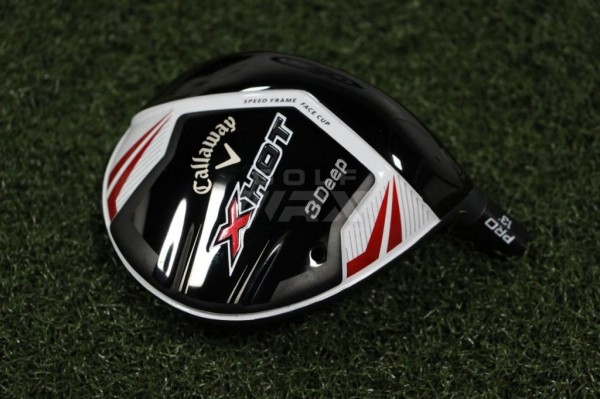
![ADAMS new and old[4]](https://storage.googleapis.com/golfwrx-bucket/wp-content/uploads/2013/09/ADAMS-new-and-old41.jpg)

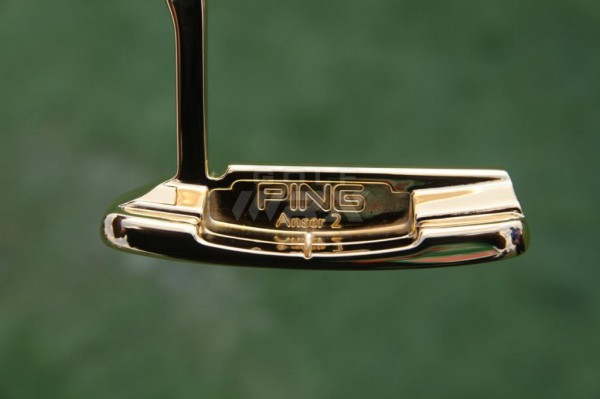





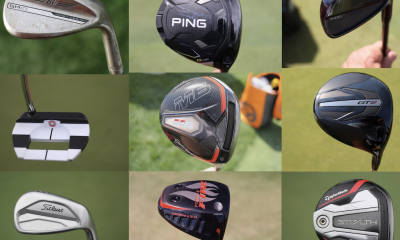



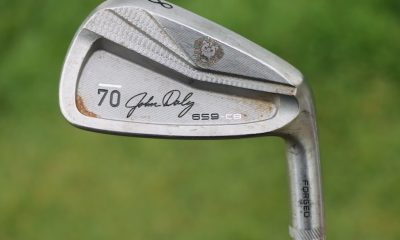

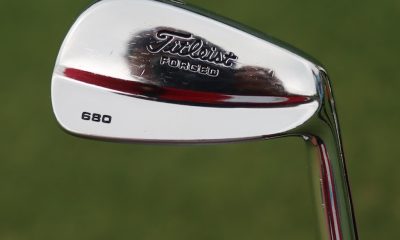









Edward
Oct 17, 2013 at 12:49 pm
Nice change of pace here. Good read.
Stewart
Oct 16, 2013 at 4:51 pm
Nice article.
Don’t see where Nike come into it as far as golf though. Even with Tiger and a few others I just don’t really think of them as a golf company.
Maybe could have included the Scotty Cameron logo.
Rich
Oct 16, 2013 at 4:05 pm
Well,” LOGO”—Titlest is a name not a logo, Taylormade is going back to the shield away from their funky “T”, Adams is also a name, Nike has a Logo the swoosh, Ping rarely uses the little man with a club, Callaway has a Logo the Chevron. But you left out Wilson Staff the oldest of all The W/S shield and the best looking of all time.
Ask who has the best Logo Not A name!
Metrybill
Oct 30, 2013 at 9:52 pm
For ME, a 65 y.o., the bet looking, soft feeling and performing balls ever (great performers in the day), were the 60’s and 70’s Maxfli black and red balls. The current iterations are harsh. Still like the look.
195 Bowler
Oct 15, 2013 at 8:10 pm
Manufacturers take their logos seriously. I took a survey for Bridgestone Golf earlier this year, something about helping to design a new ball. One of the questions was should the ball’s logo change from “Bridgestone” to the Bridgestone “B” found on most of their products (hats, bags, golf ball packaging, etc.). Or, a combination (one side with “Bridgestone” and the other with the “B”). So long as they perform well, it shouldn’t matter . . . or will it?
Mike
Oct 14, 2013 at 9:25 am
Nice article. What about Footjoy (FJ)? Surely also iconic?
Alex
Oct 14, 2013 at 10:33 am
Good point!
The mark of a player as they call it
Jeff
Oct 20, 2013 at 10:00 pm
Footjoy is a Titleist brand, not an OEM in their own right.
Alex
Oct 14, 2013 at 9:09 am
Quite interesting, always wondered what Titleist meant, such a clean classic logo always like to see that on my ball/glove/putter/wedge
Never noticed that the TM logo was a driver head! Should have done I own enough things with it on…
Tad
Oct 14, 2013 at 8:27 am
I realy don’t care for the new adams logo i think the new logo looks like a basball companys logo, but if thats the futer of logos than im sure by next year i will like it.
Ted
Oct 13, 2013 at 9:30 pm
This is a nice article… I like the origin information… thanks for writing.
Desmond
Oct 13, 2013 at 12:33 pm
Reaching for articles, arent’ we?
Chris Nickel
Oct 15, 2013 at 2:22 pm
Not reaching at all…if you have better ideas, we’d love to hear them!
KCCO
Oct 16, 2013 at 7:35 pm
Thoroughly enjoyed!
Fred
Oct 17, 2013 at 8:19 pm
Chris: good response. As we all know, advertising and marketing go hand in hand in the corporate world and, perhaps, even more so where sports is concerned. In a recent article I read, someone asked one of the magazines why the pro bags were so big. Their response: the bigger the bag, the more “logos” that can be put on it. So, a point well made about logos on balls. That said, I’m not so sure I’m all that crazy about the size of the bear on Jack’s new balls. A bit distracting I think.
Jeff
Oct 20, 2013 at 10:05 pm
I loved the article, I have a suggestion for an article I have always wanted to see. I would love to see all the OEMs connected to all their offshoot-subsidiary brands. Like how Auschsnet at a time owned Titleist, Cobra, Footjoy, and Pinnacle, even though I think Cobra was bought by Puma, I would really love to know just who makes certain brands, Strata(Top Flite- Callaway I think) and Maxfli- I don’t know if its Dunlop or Taylormade owns the rights to that brand. Anyway its just an idea. thanks.
Deacon Blues
Oct 11, 2013 at 4:57 pm
In the Ping section, I think you’re referring to the late Karsten Solheim, not his son (and successor) John.
Fred
Oct 17, 2013 at 8:11 pm
Deacon is right. My father and Karsten were very good friends and worked together at GE in Phoenix when Karsten was still creating PING clubs in his garage. In the very early `60s, I recall my father, who was an Industrial Designer, working on some advertising layouts for Karsten’s company on our kitchen table. I recall seeing the PING man even then, at a time when John and I were both in high school. On another note: I credit Karsten for peeking my interest in golf. For my 13th birthday, he gave me a new set of PING 69s and my dad and I a few of the original putters (Scottsdale and Redwoods). According to Bobby Grace, the `69s are worth around $4,000 now.
Biz
Oct 18, 2013 at 4:47 pm
Also, the PING logo type is a result of a the most simple path a round cutter/bit can take on a manual milling machine…